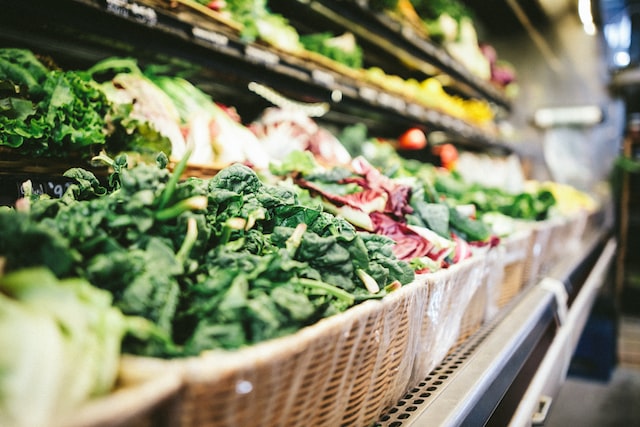

· By Mark Davis
What is Candida and How to Perform an Intestinal Cleanse
Many people confuse Candida with Candidiasis. But there’s a big distinction between the two. Candida is a genus of fungi that typically live in our bodies and on our skin. Therefore, it’s perfectly normal for it to be present in your organism. However, some types of Candida, such as Candida albicans, can cause infections in case of an overgrowth. And this infection is called Candidiasis and is treated with antifungal medication. Now, some complementary and alternative medicine practitioners say that you can prevent this overgrowth with a candida cleanse. While there’s little evidence to support this claim, it’s worth considering it. After all, a bit of detoxing can give your body a healthy boost. So, let’s find out what is Candida and how to perform an intestinal cleanse.
What is Candida and how to perform an intestinal cleanse?
Before moving forward, let’s learn more about Candida. As previously mentioned, Candida is a genus of fungi that only causes issues if it grows uncontrollably. It is usually found in your gut, where good and bad bacteria safely balance it. But it can also be present in other parts of the body, such as the mouth and skin. In case of overgrowth, it can cause infections, such as:
-
Mouth, throat, and esophagus Candidiasis are usually known as thrust. And it usually occurs in the form of white patches inside the mouth and throat, pain when eating, redness, and loss of taste.
- Vaginal Candidiasis usually causes vaginal itching and pain, as well as unusual vaginal discharge.
- Invasive Candidiasis is the most severe type of infection, which can affect your heart, brain, blood, bones, and eyes. It generally occurs when your immune system is compromised by another disease.
So, what causes Candida’s overgrowth? There are many potential causes, including antibiotics, alcohol, birth control pills, chemotherapy, stress, lack of physical activity, and poor diet. Since some of these causes are closely linked to an unhealthy lifestyle, some practitioners claim that an intestinal cleanse can prevent overgrowth. This intestinal cleanse is also known as Candida cleanse or Candida diet. Unfortunately, there’s no significant evidence that it works. But there’s no harm in trying since it can improve your general health.

Foods you should avoid
The most important part of any diet is what you shouldn’t eat. And the same goes for the intestinal cleanse. The idea is to avoid foods that increase Candida growth and aggravate gut inflammation.
1. Sugars
Some studies show that high sugar levels in your bloodstream can help Candida colonize faster. Therefore, during your intestinal cleanse, you should avoid foods high in sugar. These include both refined and natural sugars. So, avoid sweets, sugary drinks, cereals, maple syrup, honey, etc.

2. Processed food
You should always opt for clean eating instead of processed food if you want to stay healthy. And, of course, this also applies to the intestinal cleanse. So, try to avoid processed meat, white bread, pasta, pre-made meals (like frozen pizza), fast food, etc. Usually, people choose these foods when they are pressed by time and under a lot of stress. But you should find healthier solutions for these types of situations. For example, if you’re planning a long-distance move, you should have meals ready before the day of the move. Otherwise, you’ll end up ordering some fast food.
3. Yeast and Mold
Since you want to avoid fungal overgrowth in your gut, you should avoid adding even more yeast and mold. So, try to avoid mayonnaise, soy sauce, fermented alcohol, and pastry because of the high yeast content. You should also avoid peanuts, cashew, smoked meat, and dried fruit because of the high mold
content.
Foods you should eat
As previously mentioned, an unhealthy lifestyle can cause Candida overgrowth. Therefore, your intestinal cleanse should include nutritious and healthy foods. And, of course, this is also beneficial for your overall health.
1. Non-starchy vegetables
Starch is a carbohydrate that your body breaks down into gluten. And gluten can increase gut inflammation and lead to an overgrowth of Candida. Therefore, you should stick with non-starchy vegetables. These include broccoli, zucchini, spinach, eggplant, celery, etc.

2. Gluten-free grains
Since gluten should be avoided when undergoing an intestinal cleanse, you should avoid foods with high gluten content. When it comes to grains, some of the gluten-free options are quinoa, millet, buckwheat, and teff.
3. Healthy fats and quality proteins
Healthy fats are essential for a healthy diet; therefore, you should include them in your intestinal cleanse. So, opt for coconut oil, olive oil, ghee, and butter. Moreover, protein is also important. So, don’t forget to add some salmon, chicken, and turkey to your meals.
Supplements can also help
Now that you know what is Candida and how to perform an intestinal cleanse, you can explore other options as well. For example, you can also try some supplements apart from maintaining a healthy diet. Of course, you should look for those that are specifically designed for improving gut health. For
example, you can try a detox supplement that helps your body eliminate toxins or a probiotic to restore your gut flora. And you can also try a Candida cleanse supplement to relieve some of the symptoms of Candida overgrowth.
Final thoughts
Knowing what is Candida and how to perform an intestinal cleanse can be very useful. On the one hand, now you know that Candida is usually present in our bodies, so there is no need to panic. It can only cause an infection if it grows uncontrollably. On the other hand, since an unhealthy lifestyle might be the cause of Candida's overgrowth, you can do something about it. Even if there’s little proof that an intestinal cleanse can prevent Candida overgrowth, you can still use it to improve your overall health. So, why not give it a try? You’ve got nothing to lose. And since you’re ready for a healthier lifestyle, don’t forget to engage in some physical activities as well.
